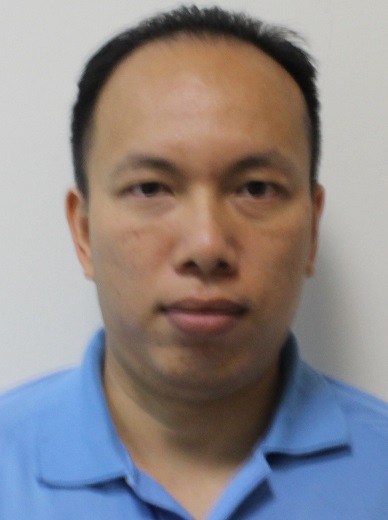
Research Interest
Characterizing the biophysical properties of normal and cancer cells
Tri studies mathematics, physics, and aerospace engineering through a Double Degree program in Advanced Science and Engineering at the University of Sydney, Australia. He then obtained a Ph.D. in Chemical Engineering, majoring in computational biophysics at Monash University, Australia.
After completing his Ph.D., Tri joined Professor Michael Shirts at the University of Virginia, USA, to train in computer-aided drug design by improving the efficiency and accuracy of free energy calculations for protein-ligand interactions. He has identified an optimal variance pathway that can reduce the total variance by 30% compare to the standard pathway. This finding facilitated computational drug design by providing a rapid and accurate method for free energy calculations.
In 2012, Tri received a prestige award (SystemsX.ch Transition Postdoc Fellowship) from the Swiss National Science Foundation to investigate the mechanics of asymmetric cell division (ACD) in Professor Clemens Cabernard’s laboratory at the Biozentrum, University of Basel. In Basel, he joined forces with Professor Daniel Müller’s laboratory at ETH Zürich to use atomic force microscopy (AFM) combining with live-cell imaging to measure hydrostatic pressure and cortical stiffness of a single cell at precise space and time during mitosis. He showed that ACD is a two-step process governed by asynchronous Myosin relocalization and internal pressure. He further showed that intracellular pressure plays an important role in enhancing the physical asymmetry in asymmetrically dividing cells. He also developed various methods and toolkits to facilitate the efficient analysis of a large amount of live and fixed cell imaging datasets. He joined the Department of Biology as an Assistant Professor in August 2019.
Education
2005 – 2009 Ph.D. in Chemical Engineering, Monash University, Australia
2001 – 2004 B.E., Aeronautical (Space) Engineering, Honours I, University of Sydney, Australia
2001 – 2003 B.Sc. (Advanced) Mathematics and Physics, University of Sydney, Australia
Research Interests
We use advanced optical microscopy techniques in combination with atomic force microscopy to investigate several interesting research topics in life sciences listed below:
- Characterizing the biophysical properties of normal and cancer cells
- Exploring the effects of biophysical forces on cell division and their influences on the cell’s development and differentiation potentials
- Correlating the molecular activity in a cell with its biophysical properties
- Testing the effects of altering biophysical properties of normal and cancer cells on their physical behaviors
- Using biosensors such as FRET and BRET sensors in combination with biophysical measurements to understand the influences of molecular activities on the cell mechanical properties as well as their physical behaviors
- Developing methods and toolkits to accurately and efficiently quantify optical and atomic force microscopy data
Research articles
Gallaud E, Ramdas Nair A, Horsley N, Monnard A, Singh P, Pham TT, Salvador Garcia D, Ferrand A and Cabernard C, “Dynamic centriolar localization of Polo and Centrobin in early mitosis primes centrosome asymmetry”, PLoS Biology, 18(8):e3000762, Aug 2020.
Tiantian Ji, Lina Zhang, Shengshuo Huang, Mingxi Deng, Ying Wang, Tri Thanh Pham, Clemens Cabernard, Jiguang Wang, Yan Yan, “Dynamic MAPK signaling activity underlies a transition from growth arrest to proliferation in Drosophila scribble mutant tumors”, Dis. Model Mech., 12(8), 2019.
Pham TT, Monnard A*, Helenius J*, Lund E, Lee N, Müller DJ and Cabernard C, “Spatiotemporally controlled Myosin relocalization and internal pressure generate sibling cell size asymmetry”, iScience, 13:9-19, 2019.
Roubinet C, Tsankova A*, Pham TT*, Monnard A, Caussinus E, Affolter M, Cabernard C, “Spatiotemporally separated cortical flows and spindle-induced Myosin confinement coordinately acts to establish physical asymmetry in fly neural stem cells”, Nat. Commun., 8(1), 1383, 2017 Nov 9. * Equal contribution.
Tsankova A, Pham TT, Garcia DS, Otte F, Cabernard C, “Cell cycle and polarity cues regulate biased Myosin activity and dynamics via Drosophila Rho kinase/Drok and Protein Kinase N/Pkn during asymmetric cell division”, Dev. Cell, 42(2):143-155, 2017 Jul 24.
L.N. Naden, T.T. Pham and M.R. Shirts, “Linear Basis Function Approach to Efficient Alchemical Free Energy Calculations. 1. Removal of Uncharged Atomic Sites”, J. Chem. Theory Comput., 10 (3), 1128-1149, 2014.
T.T. Pham and M.R. Shirts, “Optimal pairwise and non-pairwise alchemical pathways for free energy calculations of molecular transformation in solution phase”, J. Chem. Phys., 136(12), 124120, 2012.
T.T. Pham and M.R. Shirts, “Identifying low variance pathways for free energy calculations of molecular transformations in solution phase”, J. Chem. Phys., 135, 034114, 2011. Selected for Virtual Journal of Biological Physics Research 22, 2011.
T.T. Pham, B. Dünweg and J.R. Prakash, “Collapse dynamics of copolymers in a poor solvent: Influence of hydrodynamic interactions and chain sequence”, Macromolecules, 43, 10084, 2010.
T.T. Pham, U.D. Schiller, J.R. Prakash and B. Dünweg, “Implicit and explicit solvent models for the simulation of a single polymer chain in solution: Lattice Boltzmann vs Brownian dynamics”, J. Chem. Phys., 131, 164114, 2009. Selected for Virtual Journal of Biological Physics Research 18, 2009.
Book Chapters
Gallaud E., Pham T., Cabernard C., “Drosophila melanogaster Neuroblasts: A Model for Asymmetric Stem Cell Divisions”, Results and Problem in Cell Differentiation, 61, 183-210, 2017.
BIOL 355 Critical Research Reasoning
BIOL 456 Biology Research Design
BIOL 502 Research Methods
BIOL 520/720 Statistical Methods in Life Sciences
BIOL 590 Research Analysis in Life Sciences



